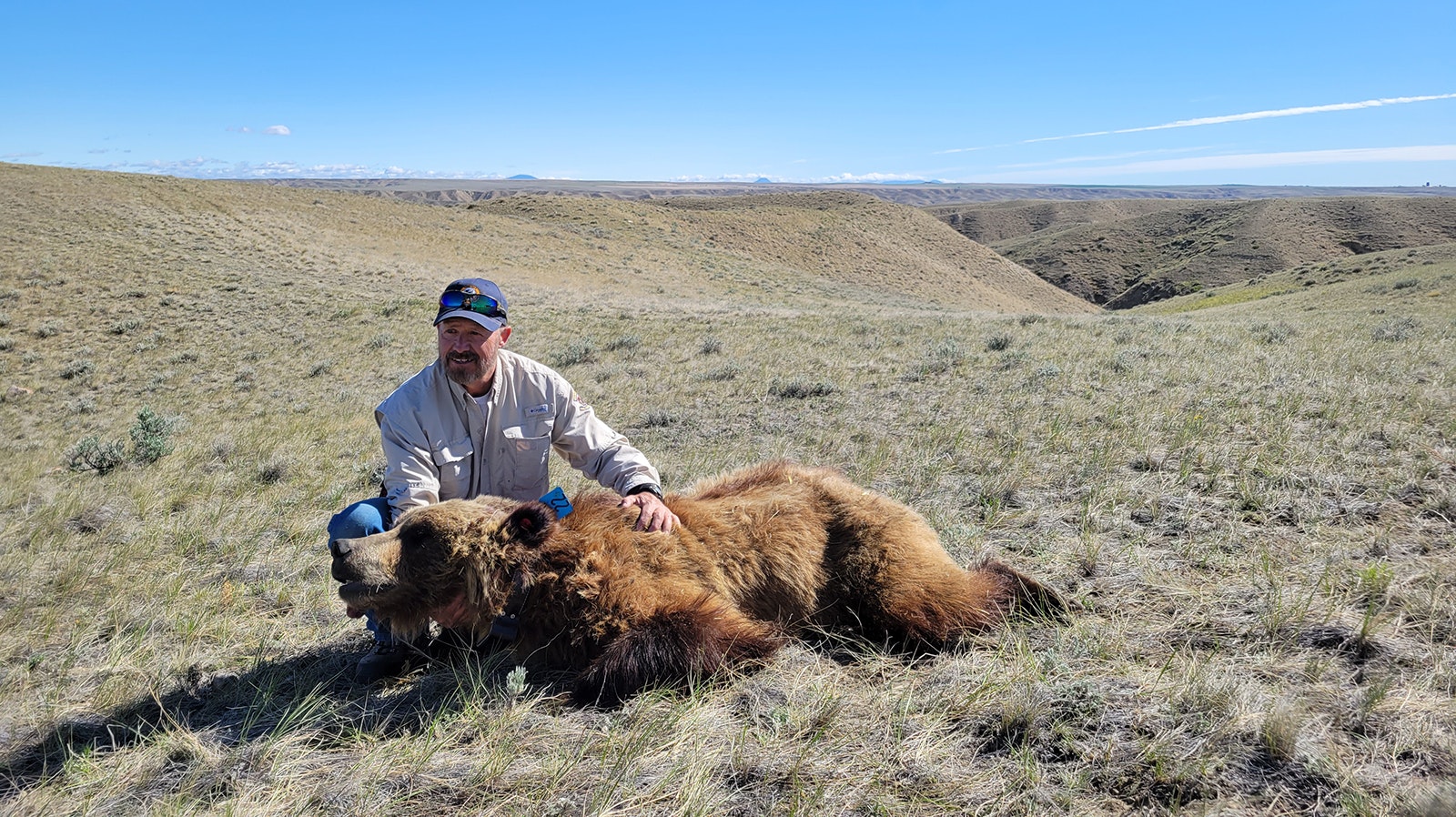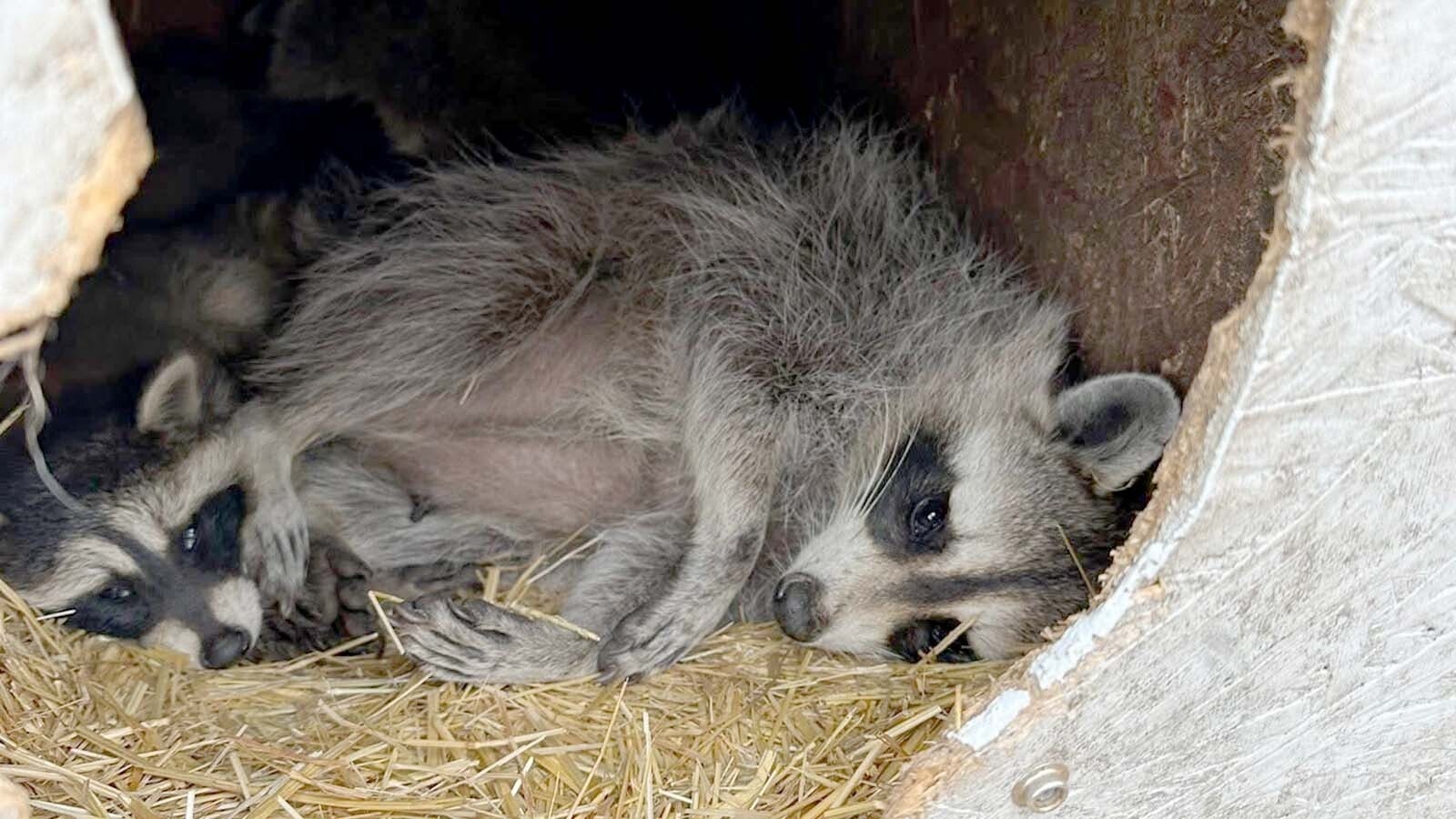Managing Wyoming’s grizzly bears has come with its challenges, but Montana wildlife officials have a unique quandary – prairie grizzlies.
“People in the ‘gap areas’ (between the Yellowstone and Glacier park ecosystems) were already used to black bears” and so they’ve adjusted to grizzlies moving in, said Montana Fish, Wildlife and Parks department spokeswoman Danielle Oyler.
“Whereas the folks out on the plains, they didn’t have black bears there. So having grizzlies show up has been a huge challenge,” Oyler told Cowboy State Daily.
Montana’s prairie grizzlies are an “unintended consequence” of the overall grizzly recovery program, FWP bear management specialist Wesley Sarmento told Cowboy State Daily.
“There’s a lot of folks uncomfortable with grizzlies being out here,” said Sarmento, who is based in Conrad, Montana, about 60 miles north of Great Falls. “They didn’t expect to have grizzlies out here. And in the original planning documents for grizzly recovery, there was no mention of grizzlies being out here.”

Home On The Range
Grizzly bears are well-adapted to life on the prairie. They evolved from brown bears on the wide-open steppes of Russia, and at one time occupied most of the Great Plains.
Wildlife officials in Wyoming and Nebraska recently told Cowboy State Daily that it’s unlikely grizzlies will reclaim prairie habitat in those states.
But in Montana, they’ve made a home on the range. Grizzlies have pushed well into northern prairie habitat around small communities such as Conrad and Augusta, Oyler said.
“They go well out into the prairies now. They are definitely out in prairie settings,” she said.
The land there is largely private, mostly vast grain farms and cattle ranches, Sarmento said. And adjusting to grizzlies has been tough for prairie folks.
“Kids used to able to run free in the summers and go down to the creeks and go fishing,” he said. “And that’s a lot harder to do right now because of the chance of a grizzly encounter.”
Even so, the grizzlies are probably there to stay, Sarmento said.
“There is a breeding population of grizzlies on the plains, and it’s more and more every year,” he said.
Bruins Making A Comback
Grizzlies are popping up in many places across Montana where they haven’t been seen in decades, Oyler added. Even some larger communities, such as the state capital of Helena, have bruins nearby.
A grizzly was recently spotted roughly 30 miles south of Billings, as the crow flies, in the the Pryor Mountains. The Pryors extend into Wyoming and are adjacent to the Bighorn Mountains. It was the first verified sighting of a grizzly in the Pryor range since the 1800s.
Grizzlies have long been rumored to be in the Bighorns as well, though there haven’t yet been any verified sightings of them there.
Munching On Cattle Carcasses, Grain
Grizzlies need only the basics to reclaim habitat, Oyler said.
“What’s ideal for them is good food and availability of cover,” she said.
For cover on Montana’s northern plains, grizzlies have taken advantage of natural river bottoms as well as “shelter belts” of trees and shrubbery planted by humans for wind breaks, she said.
There are abundant natural food sources for grizzlies, depending upon the season, Sarmento said.
In the spring, grizzlies can feast on roots and fresh green prairie grass, he said. And they also might occasionally kill whitetail deer fawns.
During the summer, they switch to gorging on wild berries and chokecherries. In the fall they can finish off wounded deer that escaped human hunters or eat gut piles that hunters leave behind.
The trouble begins when they develop a taste for livestock, Sarmento and Oyler said. It might start with grizzlies raiding carcass dumps where ranchers leave piles of dead cattle.
“They get into ranchers’ ‘dead piles.’ And, unfortunately, they sometimes kill ranchers’ livestock,” she said.
Even when cattle carcasses have decayed, grizzlies can get ample calories and rich nutrients from the bones, Sarmento said. But FWP doesn’t like the bruins hanging around carcass piles, because it puts grizzlies in close proximity to people and livestock, upping the chances for conflicts.
“We’ve started a carcass clean-up program” to help mitigate such grizzly magnets, he said.
Piles of grain spilled during harvest can also draw grizzlies, because grain is an easy and calorie-packed meal for the bears, he added. So FWP also encourages farmers to be diligent about cleaning gain spills.

‘Young, Dumb Bears’
Older, wiser bears have managed to adapt well to the northern plains without raising a ruckus, Sarmento said. But with juveniles trying to strike out on their own, it can be a different story.
“For the most part, the bears are pretty good at staying out of trouble. Most of the bears we’ve had trouble with are young, dumb bears,” he said.
Those are typically bears that have recently separated from their mothers and push “east, even farther out on to the prairie” in search of new territory, Sarmento said.
What’s more, they can be much younger than Wyoming sub-adult grizzlies, which usually separate from their mothers around age 2 or 3.
“This area is a system of relatively low risk and high resources for grizzlies. In these kinds of systems, we see young bears getting kicked out on their own by their mothers as yearlings, instead of the typical two-year-olds or three-year-olds,” he said. “And the yearlings can be really dumb.”
Hazing Usually Works
To help keep grizzlies — particularly the young, dumb ones — from getting crossways with farmers and ranchers, FWP has found that hazing is effective, Sarmento said.
“Most bears respond to hazing,” he said. “We use dogs, rubber bullets or cracker shells.”
Cracker shells fire a charge from shotguns. The charge explodes in mid-air, like a large firecracker.
FWP also uses drones to chase bears away from places they shouldn’t be, Sarmento added.
When hazing doesn’t work, FWP might trap bears and relocate them to mountain wilderness areas. There have been only a few cases in which wildlife agents have had to kill prairie grizzlies, he said.
FWP has also launched a guard dog program on some farms, he said.
“We’ve found that dogs are pretty good at scaring grizzlies away from farms where there have been gain spills,” Sarmento said.

‘People First’ On The Prairie
Grizzlies in the Lower 48 states were all but wiped out by the mid 1970s, so they were placed under special endangered species protection. In recent years, there has been a push to have them delisted, and management handed over to state wildlife agencies in Wyoming, Montana and Idaho.
In Montana, grizzlies first re-established themselves in areas such as Glacier National Park and surrounding wild country in the Northern Continental Divide Ecosystem. They also bounced back in the Greater Yellowstone Ecosystem that the Big Sky State shares with Wyoming.
Many of Wyoming’s top elected officials, along with their peers in Montana and Idaho, have renewed the push to delist grizzlies this year.
In the long run, grizzly management on the prairies will hinge on a “people first” approach,” Sarmento said.
“In the core grizzly habitat such as the Bob Marshall Wilderness, it’s mostly wild, public land, and we put the needs of the grizzlies first,” he said. “Out here on the prairies, the policy is to put the needs of people first.”
Mark Heinz can be reached at mark@cowboystatedaily.com.





